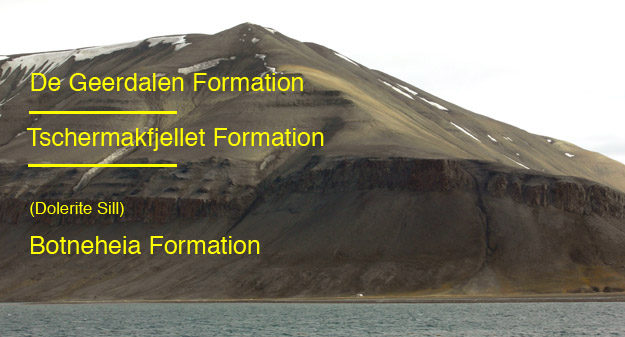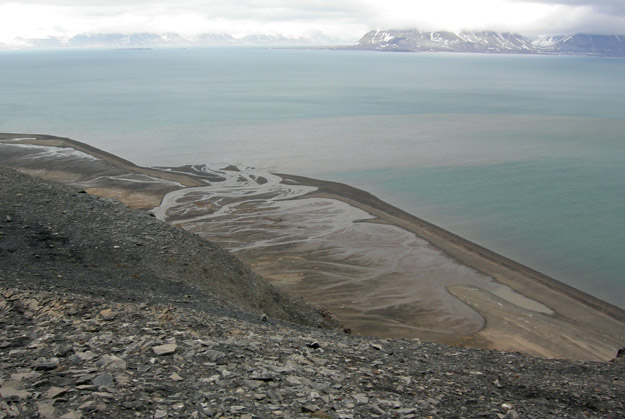NEAR DIABASODDEN, SVALBARD–Yesterday’s field trip was a brief survey of three Triassic (Anisian to Carnian) siliciclastic units, with students concentrating on the third. From bottom to top they are the Botneheia Formation (a gray to black shale with numerous bits of ichthyosaur bone), the Tschermakfjellet Formation (shales notable for the many Monotis bivalves preserved within them), and the De Geerdalen Formation (mostly sandstones with excellent ripples and hummocky cross-stratification). We concentrated primarily on the De Geerdalen, with the students measuring various sedimentological parameters. I was amazed at what they could do in a constant high wind and while encumbered by all the cold-weather gear. My students who complain that they are too cold or the mountain is too steep will now hear about the sturdy students in Norway!
My small contribution was identifying fossils, especially trace fossils which would be useful for paleoenvironmental interpretations. We found Chondrites, Rhizocorallium, Lockeia, and Diplocraterion in the De Geerdalen Formation, along with occasional infaunal bivalve molds and a brachiopod-rich shell hash in a carbonate. It all indicated relatively shallow water to me, just below normal wavebase.
A bonus was the set of modern geological processes around us as we worked. The river coming out of the De Geerdalen has made a great little delta, complete with a sediment plume showing the prevailing current in this part of the fjord. There are also various cold-climate features including patterned soil and mounds of frost-heaved rocks.
Besides the introduction to a particular set of geological issues, I learned on this trip how critical the logistics are for organizing work in this part of the world. Keeping track of all the equipment needed for any geological expedition, and then adding the requirements of a long trip in an open boat (those survival suits being just one factor), then the Arctic weather preparations, and finally the rifles and other polar bear precautions — a lot more than just ordering the vans and a few box lunches! I am very grateful to Maria Jensen, my Norwegian host, for inviting me on this trip with her students. She was busy enough without a clumsy American along.




